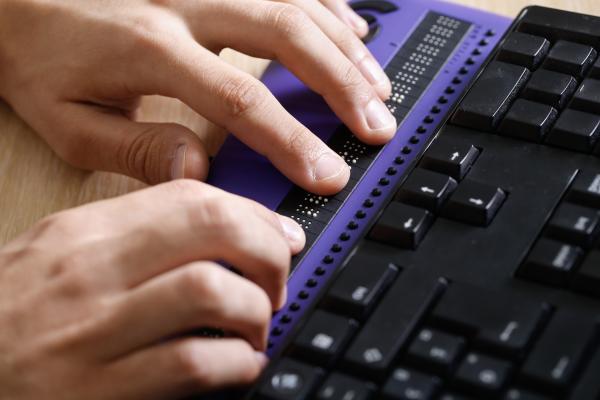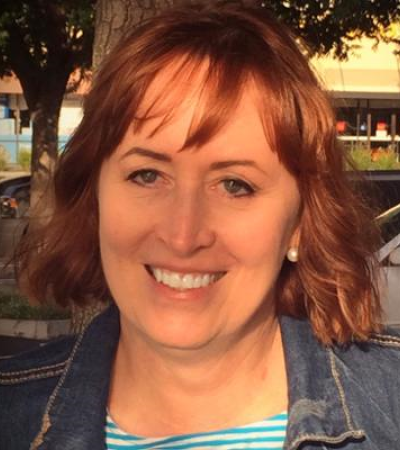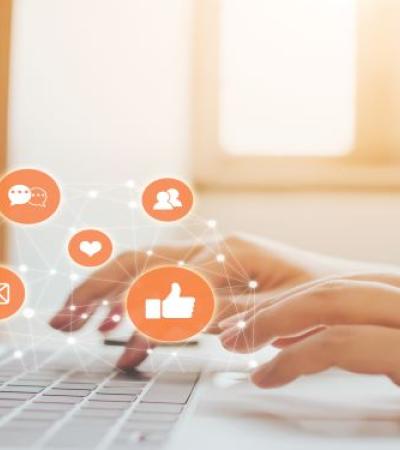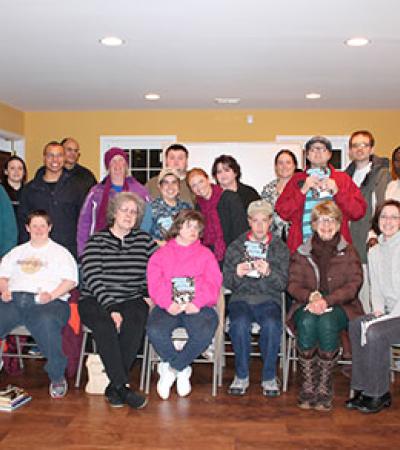For many library workers, 2020 has been a crash course in learning to reach patrons in new ways. But if your pandemic response has included more online programs, you may inadvertently be leaving some people out. One in four Americans has some type of disability.

As we end this unprecedented year — and hopefully have some time to breathe — take some time to assess the accessibility of your virtual programs and make them more accessible for the year to come. Christena Gunther, founder and president of the Chicago Cultural Accessibility Consortium (CCAC), offers tips on how to create an online space that is welcoming for everyone.
1. Include accessibility information (a "statement of welcome") on virtual event webpages
People with disabilities are often forced to hunt down accessibility information on the websites they visit. Each event you offer should include an accessibility statement at the bottom with the contact information of someone on your staff who can help make the event accessible.
Disability advocates call this a statement of welcome, and having one is a crucial signifier in saying that it is not a burden to reach out and ask for an accommodation, Gunther says.
An example might be:
Event Accessibility for Guests with Disabilities
This event is for everyone! The event will be captioned. If you require another access service to fully participate or have any questions about accessibility, please contact [CONTACT PERSON] at [CONTACT INFO]. To ensure the best experience, please try to contact us at your soonest convenience.
Make sure that the staff member whose contact information is listed is regularly checking email and voicemail and is prepared to respond promptly.
2. Try your best to fulfill to requests
Be open and ready to fulfill accessibility requests. If a patron asks for something your library has never provided before or has a request you’re unfamiliar with, your default answer should never be “no.” Instead, it should be “let me check and get back to you.”
If it’s a request that you’re not sure how to handle, Gunther suggests reaching out to peers at other organizations to see how they may have handled these types of requests or contacting a group like CCAC or your region’s ADA Center to learn more about your legal obligations and options. You can share your quick research with your supervisors to determine what is possible for your library and the event.
It is usually not difficult to provide a comfortable experience in all your virtual programming, Gunther says, but it requires a new way of thinking. Be open to offering any assistance to help disabled patrons make the most of the programs you offer.
3. Describe, describe, describe
People with disabilities have different approaches of accessing information depending on what works for them. For this reason, Gunther says, redundancy is a positive thing for accessibility. Present your content in multiple formats to ensure effective communication.
What does this look like in practice? For instance, ensure that all speakers are prepared to demonstrate any visual actions through language; provide verbal descriptions of what you look like and encourage other presenters to do the same; and briefly describe what visual images are being presented. Imagine your presentation is being shared on the radio so you have to share visual information to listeners who cannot see it.
When presenting a slide with text, avoid saying things like “you can read along as I am speaking,” or “as you see here.” You should never let images describe themselves. Be ready to share information in different ways to meet everyone’s varying needs.
4. Captioning is critical
When you think of accessibility in virtual programming, you might think of captions. Captioning is an example of an access service that benefits different audiences, including people who are Deaf or hard of hearing, older adults and English language learners. For your livestreamed or pre-recorded programs, there are different ways of providing closed captioning.
In livestreams, you can choose from the built-in ASR (automatic speech recognition) captions that Zoom and other platforms provide or hire a real-time human captioner (called a CART captioner). Though it does involve a cost, hiring a human to caption leads to a more accurate result; since ASR captions are computerized, errors can occur when dealing with proper nouns and human speech tendencies such as accents, slang or speech-related issues like stutters. If you are on a limited budget and cannot hire a transcriber, Gunther recommends Otter AI.
Pre-recorded videos should always be captioned; don’t rely on the auto-generated captions that platforms such as YouTube provide. Update your captions easily and at no cost through YouTube. Make it part of your process for every video you upload.
5. Model accessibility for your participants
Explain your accessibility offerings before you start your programs — for example, “if you need captioning, you can access it here. We are providing captions to be accessible to people who are Deaf or hard of hearing,” or “We will use language to explain all images shown in this webinar to help anyone who can’t see them.” This will help all participants normalize accessibility in our programming, Gunther says.
When people see and understand accessibility in action, they can learn and implement it into their own lives.
6. Accessibility is not about compliance; it’s a journey with no destination
Think your library is already fully compliant? Think again, Gunther says.
Accessibility needs are always changing — either because of a new event or program being offered or a request made by a person with disabilities. It is helpful to think about accessibility as a journey with no destination because we will never be done with this work.
Gunther encourages you to connect with peers at other libraries and cultural spaces in your community around issues of accessibility. Working together makes this work more successful and lightens your load, too! Advocate for accessibility in all the work you do at your library and in your own life. We all have room to grow.
7. Invite feedback from patrons with disabilities
The disability rights credo “nothing about us without us” is a powerful reminder that the accessibility work we undertake as library professionals can’t and shouldn’t happen in a vacuum.
As you start to offer more accessible online events, solicit feedback from disabled patrons who have used your access services. Do they like the captioning you’re providing? Do they have feedback about the ASL interpreter you had or the placement of the interpreter? Encourage feedback and two-way conversations from people with disabilities to ensure that the services you’re providing are of high quality and truly benefiting the audience you want to serve.
Resources
- Find Your Region’s ADA Center: ADA Centers provide free, technical assistance related to the Americans with Disabilities Act (ADA). It’s a helpful place to turn to with a specific question or request from a patron.
- List of Resources from Chicago Cultural Accessibility Consortium: Find a local access network like CCAC in your area. Get connected to make your job easier when it comes to providing accessibility.
- Virtual Accessibility tips from ALA's Reference and User Services Association
- Leading Accessible Virtual Programs (webinar)
- "Inventory of Apologies" - Artist Joseph Gringely's documentation of the discrimination he's faced during the pandemic's burst of virtual programming.
- How to Caption Your Videos
- The Registry of Interpreters for the Deaf: Find an interpreter for your virtual programs
- Guidelines for Image Description: Helpful resource about how to approach about verbal descriptions of images
- The Audio Description Project: Provides contact information for individuals or organizations involved with writing and/or narrating audio description
- Zoom Accessibility Features
- How to Make Graphic Design Accessible to Users With Disabilities
- Color Vischeck: Before creating a webinar, presentation or video, determine whether the images are accessible to those with color vision deficiency
- Contrast and Color Accessibility and the Contrast Checker
- Downloadable Disability Access Symbols: If you have accessibility offerings you’re providing, make it obvious with these universal symbols
Know of a resource not on this list? Comment below or email it to us at publicprograms@ala.org.
Funding for this article series has been provided by the National Endowment for the Humanities (NEH) as part of Coronavirus Aid, Relief and Economic Security (CARES) Act economic stabilization plan.




